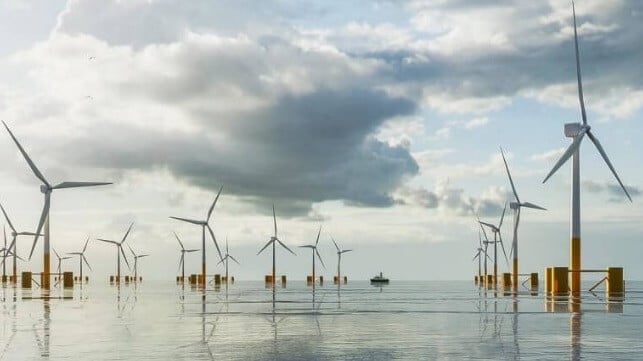Maine Awarded First License for Floating Offshore Wind Research Project

A research effort to develop possibly the first floating offshore wind project in the United States received a research lease today from the U.S. Department of the Interior. It comes almost three years after Maine first filed for the research license to further research projects undertaken by the University of Maine. Maine as a state has moved to bar nearby coastal wind energy instead encouraging it to move further out into the gulf away from its fishing and tourism industries.
The first floating offshore wind lease provides for about 10,000 acres located 28 nautical miles off the coast of Maine on the U.S. Outer Continental Shelf. It is about 45 miles from Portland, Maine. When the state proposed the site, it called the project the next step in research ongoing for more than a decade at the University of Maine to develop floating concrete hull technology for offshore wind turbines.
As a research lease, Maine or its designated operator will propose and conduct research regarding the environmental and engineering aspects of the proposed project. This information will be made public and used to inform future planning, permitting, and construction of commercial-scale floating offshore wind projects in the region. The research lease also allows for the state, fishing community, wildlife experts, and others to conduct in-depth studies and thoroughly evaluate floating offshore wind as a renewable energy source in the region. Information gathered from the research lease the department says will inform commercial floating offshore wind development in the future.
“Floating wind opens up opportunities to produce renewable energy in deeper water farther offshore,” said Bureau of Ocean Energy Management (BOEM) Director Elizabeth Klein. “Signing the Gulf of Maine research lease demonstrates the commitment by both BOEM and the State of Maine to promote a clean energy future for the nation.”
Maine proposed placing up to 12 floating turbines as part of the project. It would have a capacity based on current designs for up to 144 MW of electricity. Construction activity on the research array is not likely to occur for several years. The lessee is first required to submit a Research Activities Plan to BOEM, which will undergo environmental analysis under the National Environmental Policy Act.
Today’s action comes as BOEM has proposed the development of offshore wind in the Gulf of Maine. BOEM outlined an area in a range between 23 and 92 miles off the coast in April 2024 as the first target in the Gulf of Maine. It ranges from Maine to Massachusetts and New Hampshire and they estimate it has a capacity to provide up to 32 GW.
Earlier this year, the Biden administration mapped out the next phase of proposed lease auctions for the offshore wind power industry. This included the Gulf of Maine with a total of 12 additional lease sales planned by 2028. The Department has approved the first nine commercial-scale offshore wind projects with 13 GW of capacity.
The Department of the Interior announced a goal to deploy 15 GW of floating offshore wind capacity by 2035. The administration is providing support for various research efforts designed to lower the cost of deploying floating wind projects.
